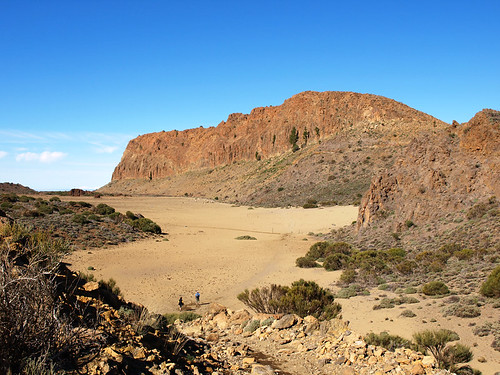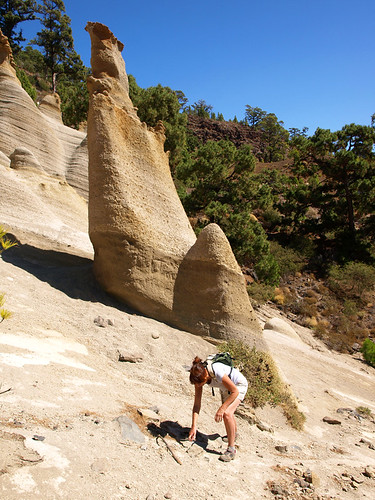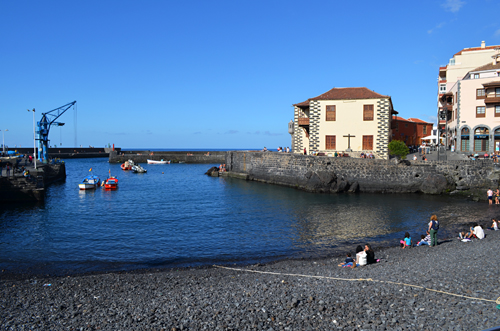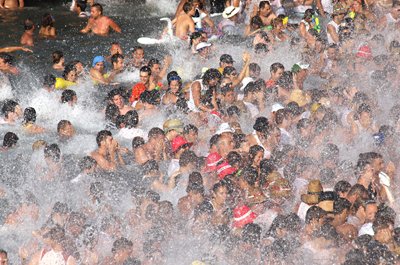We’re normally lone walkers, we don’t usually do groups. We prefer to walk at our own pace, stop to take pictures whenever we want and pick where we want to eat lunch.
However, last month we were on a press trip to La Isla Bonita, La Palma where we joined a couple of organised walking groups. It was an interesting and extremely enjoyable experience (the walking routes were out of this world). But with various experienced walkers struggling with the heat, ascents, descents and river crossings it also brought home to us how much we had adjusted to walking in the Canary Islands and how people from cooler climes with different landscapes might find walking on Tenerife just a little bit different.
Heat
It seems obvious but temperatures on Tenerife and the other Canary Islands can make, what seems on paper, a relatively straightforward hike into a challenging one. Even in September you could find yourself walking in temperatures above 30C. On forest trails, with a light mountain breeze to help, this can feel exquisite, especially if you’ve just experienced a rotten summer. But on unshaded routes those temperatures can be a killer.
On La Palma, one of the group we walked with, who was in her 20s, struggled seriously under an unrelenting sun. And she had a hat, endless water supplies from fountains and a river from which to soak a towel that was placed around her neck to cool her down. The attentive guide Jonás shepherded her to the end of the route. Although it was a classic of a walk, it was clearly not an enjoyable experience on her part.
Tip: Take note of forecasted temperatures, if high temperatures are predicted steer clear of open spaces. Always, always make sure you have plenty of water (take a lot more than you normally would on a hike in cooler climes), pack a hat that covers the head and the neck and take plenty of sun cream.
Rain
Rain is relatively infrequent on Tenerife’s coasts, even in the north and even in winter. It’s less so the case in the hills, but even there you’d have to be unlucky to experience heavy rainfall. When the island does have heavy rain (often around the change of seasons in October/November and February/March), there can be monsoon-like downpours and even flash flooding.
Tip: Heavy rain rarely comes without a warning so, in winter months especially, check reputable forecasts like AEMET before setting off walking in the hills – if there’s an alert for heavy rain, don’t chance it. Often these alerts don’t affect all parts of the island, so there’s usually somewhere dry to walk.
Altitude
Ben Nevis, the highest mountain in Britain, is 1,344 metres in height. Mount Teide touches the skies at 3,718 metres and a lot of the good walking on Tenerife starts at around the 1000 metre mark. The air is thinner and although altitude sickness doesn’t normally affect people below 2,400 metres, you will notice a difference, especially given the nature of Tenerife’s terrain (see below).
Tip: Don’t head off in gung ho style, take time to adjust to the differences.
Ascending
Tenerife’s landscape climbs from sea level to high altitude over a very short distance. The island’s slopes are filled with deep ravines. Both of which means that many routes are going to involve quite steep ascents. Personally I prefer ascending to descending but if you’re not used to walks that can rise 600 metres or more in the space of a few kilometres, it might involve a lot of huffing, puffing and grunting.
Tip: If you’re fit it shouldn’t pose a problem but if you’re more used to walking on less undulating terrain try a couple of shorter Tenerife walks before attempting any biggies.
Descending
What goes up must come down and descending down goat trails over a long distance can put a lot of pressure on knee joints and also force toes right up against your walking shoes, potentially causing damage to the nails. One of the people we walked with in La Palma had almost completely lost one of his nails after a long descent.
Tip: Knee supports can be a life-saver if a number of walks that involve lengthy descents are planned. As for the toes, keep the nails very, very short.
Stunning Views
They come as standard on most walks on Tenerife. Often paths are narrow and ravines are deep.
Tip: Always take the time to stop to soak up the views. It’s much more satisfying… and safer.







Be the first to comment